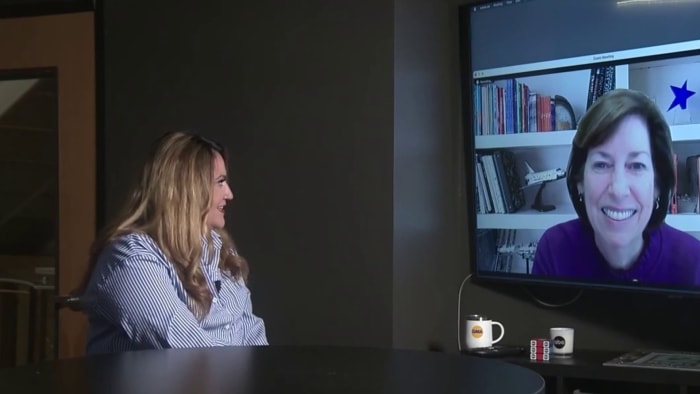Astronaut Ellen Ochoa talks to KSAT 12 about upcoming total solar eclipse
In less than two weeks, people from around the world including astronauts will be coming to Texas to get a view of the total solar eclipse. Veteran astronaut Ellen Ochoa, the first Latina astronaut to go into space, has spoken to KSAT 12 about the upcoming total solar eclipse. She was the first woman to spend nearly 1,000 hours in space and later became the 11th director of NASA’s Johnson Space Center in Houston. Ochoas believes the event offers a great opportunity for scientists to learn about science, particularly in relation to the corona of the sun, which can only be observed during a solar eclipse, which scientists use to collect data from the sun. She also shares her personal experiences and plans to travel to Austin next month to catch the eclipse.

Published : 4 weeks ago by Tiffany Huertas, Ken Huizar in Science
SAN ANTONIO – In less than two weeks, people from around the world including astronauts will be coming to Texas to get a view of the total solar eclipse.
Veteran astronaut Ellen Ochoa was the first Latina astronaut to go into space. She spent nearly 1,000 hours in space from 1993 to 2002, and in 2013, she became the 11th director of NASA’s Johnson Space Center in Houston.
RELATED: First Latina astronaut Ellen Ochoa reflects on career, shares message to women and young girls
KSAT 12 recently spoke with her about what we can learn from this amazing natural phenomenon.
“First of all, I hope it gets people interested in what astronomy can teach us, about all the objects and particularly the ones that we see every day. The sun and the moon, as well as the Earth. How they sort of interact and learn a little bit more about orbital dynamics,” Ochoa said.
Ochoa said it’s simply a great opportunity to learn more about science.
“For scientists, it is also another great opportunity, particularly to study the corona of the sun, because with the rest of the sun blocked out there are ways that you can now collect data that you couldn’t. You can only do that, you know, during a solar eclipse,” Ochoa said.
KSAT 12′s weather team has been nonstop covering stories related to the upcoming total solar eclipse.
Meteorologist Justin Horne said he is excited for this once in a lifetime event. He asked Ochoa if she has ever talked with anyone who has been in space when the eclipse took place.
“There’s some photos and some video. You can look at it from the 2017 eclipse. I think you could just, look it up online. It’s essentially showing the shadow on Earth from the eclipse. We had people in space in 2017. We’ve got them in space now. So they have a unique vantage point to look at that shadow circle,” Ochoa said.
KSAT meteorologist Mia Montgomery wanted to learn more about her experiences.
“What is the favorite thing about what you do?” Montgomery asked.
“I think it’s about the goals NASA has. It’s about making new discoveries. It’s about solving challenges. It’s trying to understand more about what humans can learn about the space environment and really then how to bring benefits back to Earth from that as well. So I was just happy to be part of a team that was working on that mission,” Ochoa said.
Next month, she will be traveling to Austin to catch the total solar eclipse.
Topics: Space
